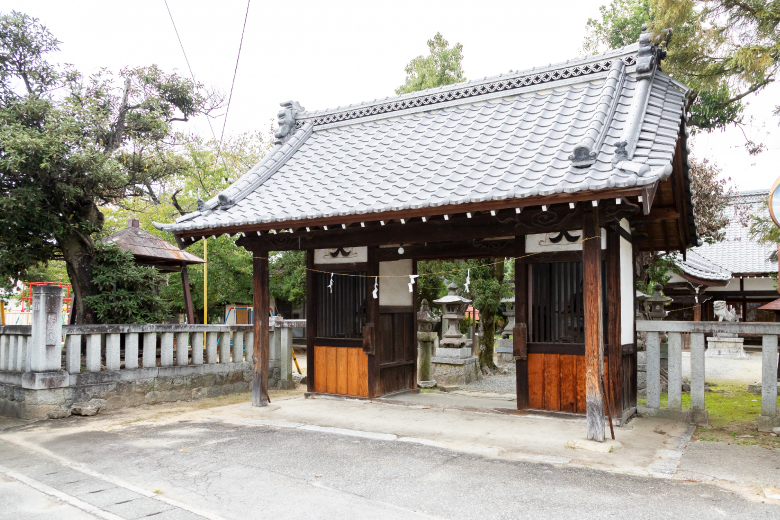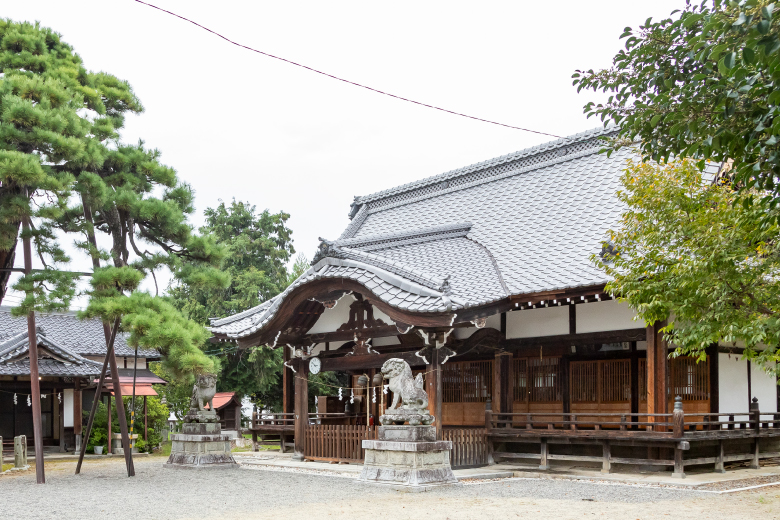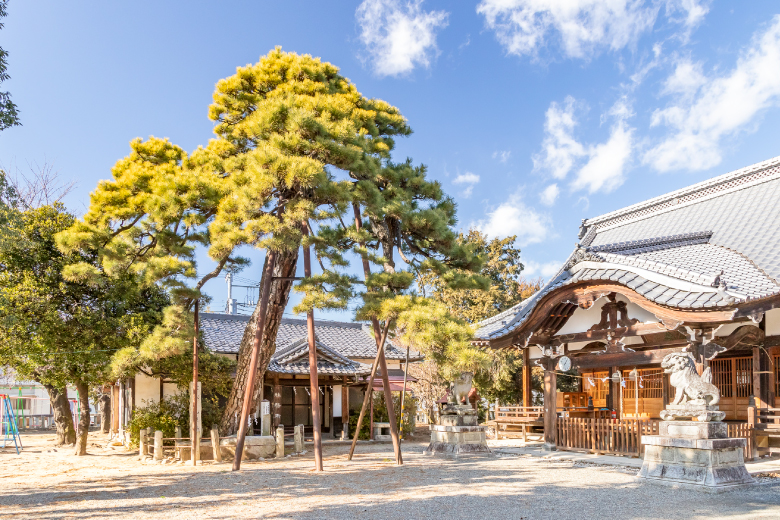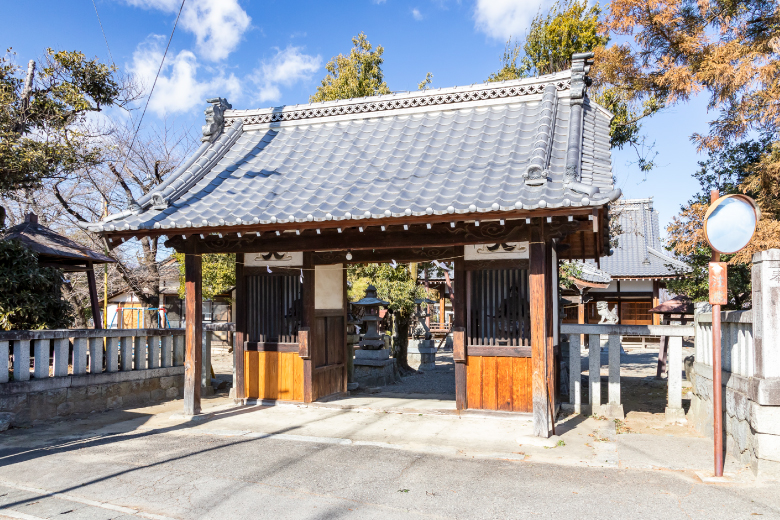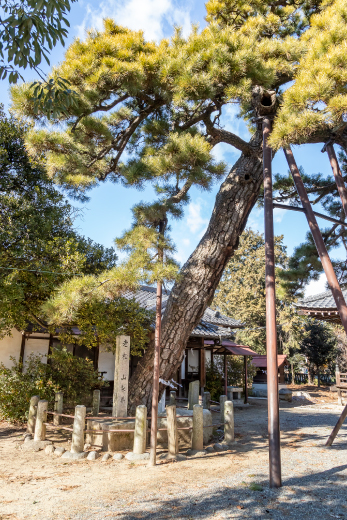The building has a Kabuki-zukuri structure, which attracted many actors heading to the Kofu Region who wished to perform here to experience it.
The worship hall has many votive pictures. A relatively large work in ukiyo-e style measuring 165 cm wide by 94 cm high that was dedicated in 1772 (Edo Period) depicts a scene of a play performed in the village.
According to the notation on the back, an artist from Edo who dropped by at the shrine was asked by 14 amateur actors that performed in village theatricals to do the painting. The name of the artist is unknown; however, because such votive pictures in ukiyo-e style are rare with only few to be found throughout the nation, it is now a cultural property of Yamanashi City.
In addition to these items, there is a 12-m tall black pine tree designated as a natural monument of the city in the precincts of the shrine with a stone placed at its base as a prayer for the sound growth of children, and the large stump of a Zelkova tree burned in a fire during the Meiji Period (1868-1912) that is now covered with a roof and worshipped.
The worship hall has many votive pictures. A relatively large work in ukiyo-e style measuring 165 cm wide by 94 cm high that was dedicated in 1772 (Edo Period) depicts a scene of a play performed in the village.
According to the notation on the back, an artist from Edo who dropped by at the shrine was asked by 14 amateur actors that performed in village theatricals to do the painting. The name of the artist is unknown; however, because such votive pictures in ukiyo-e style are rare with only few to be found throughout the nation, it is now a cultural property of Yamanashi City.
In addition to these items, there is a 12-m tall black pine tree designated as a natural monument of the city in the precincts of the shrine with a stone placed at its base as a prayer for the sound growth of children, and the large stump of a Zelkova tree burned in a fire during the Meiji Period (1868-1912) that is now covered with a roof and worshipped.

